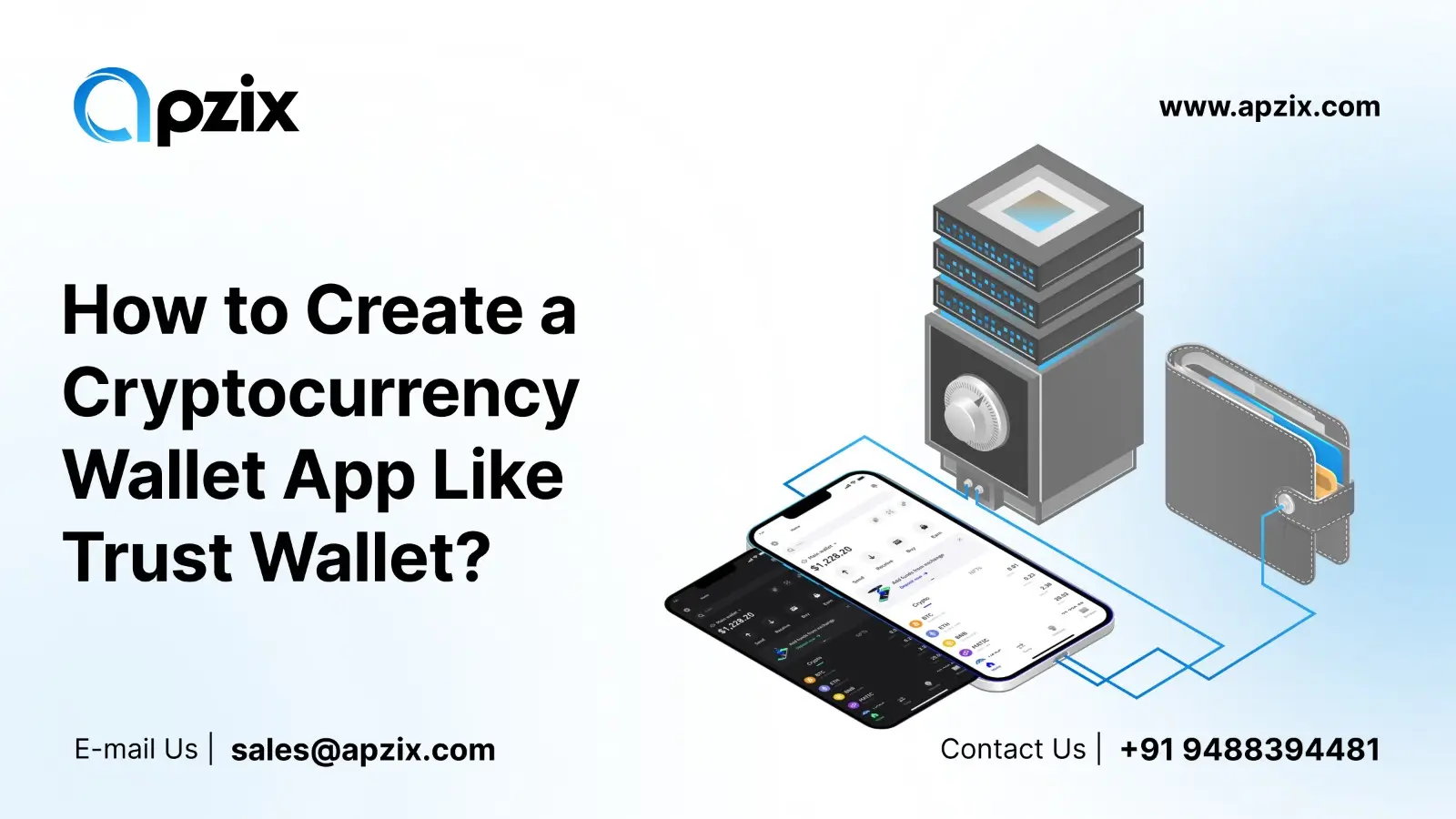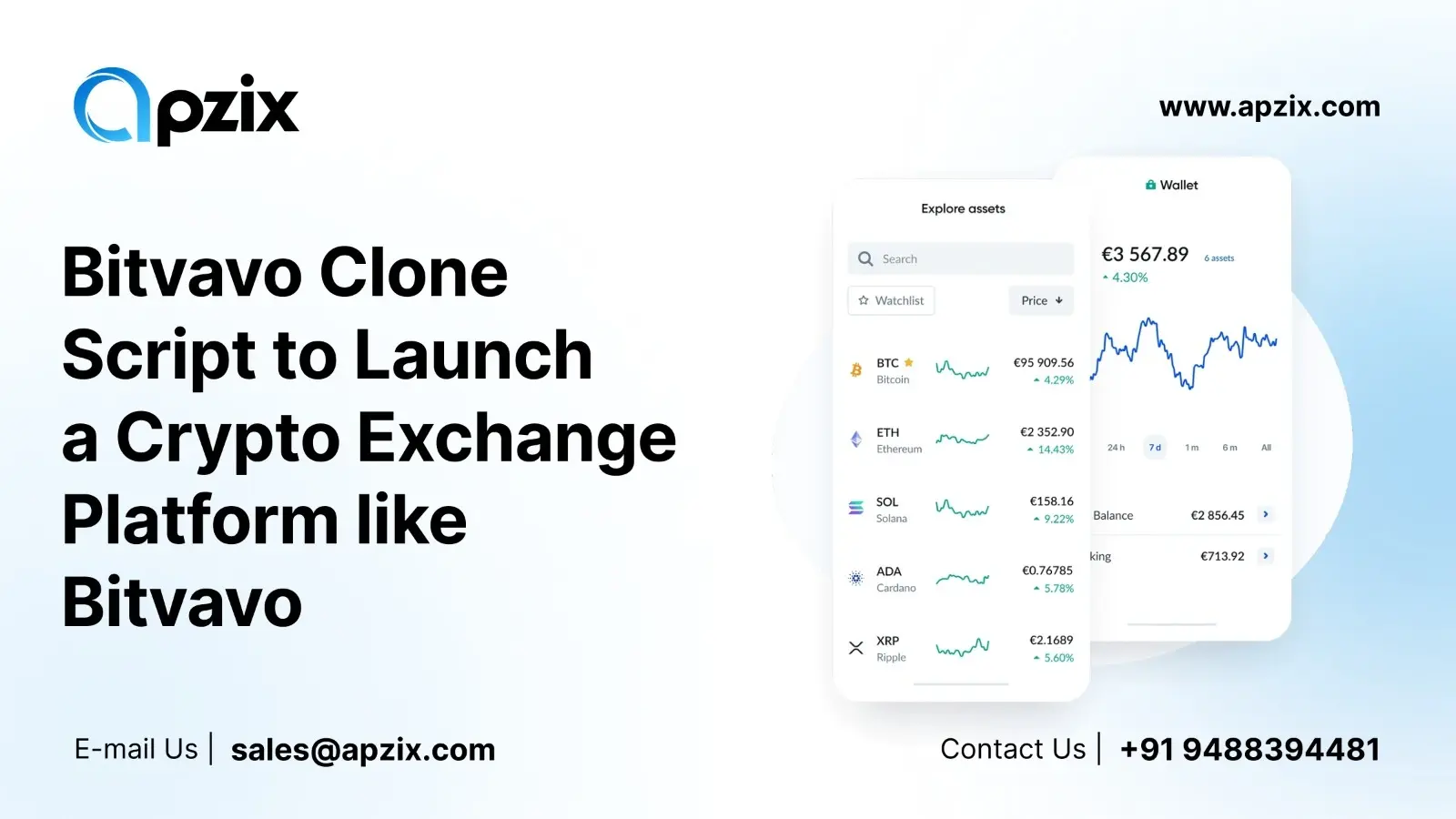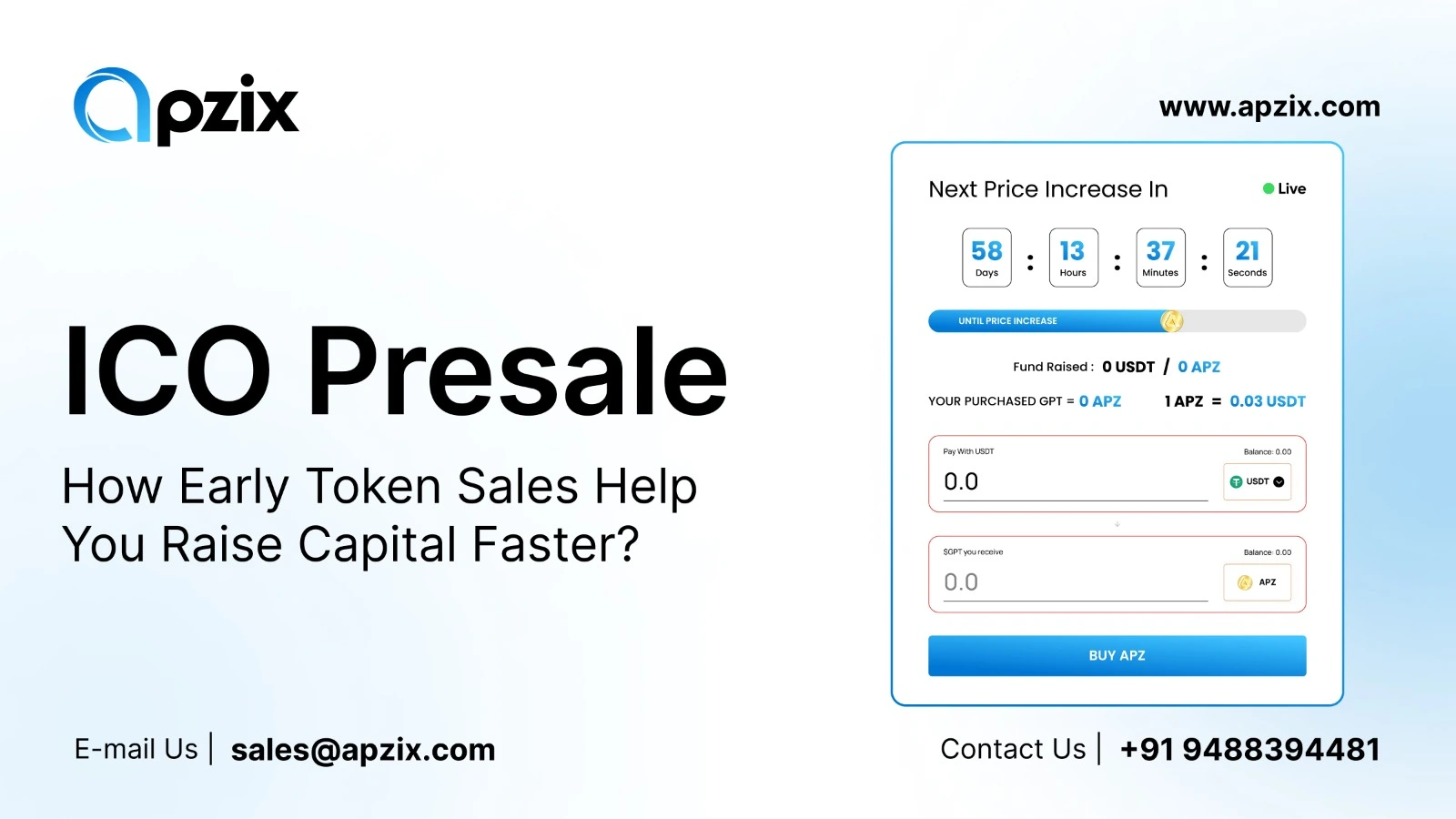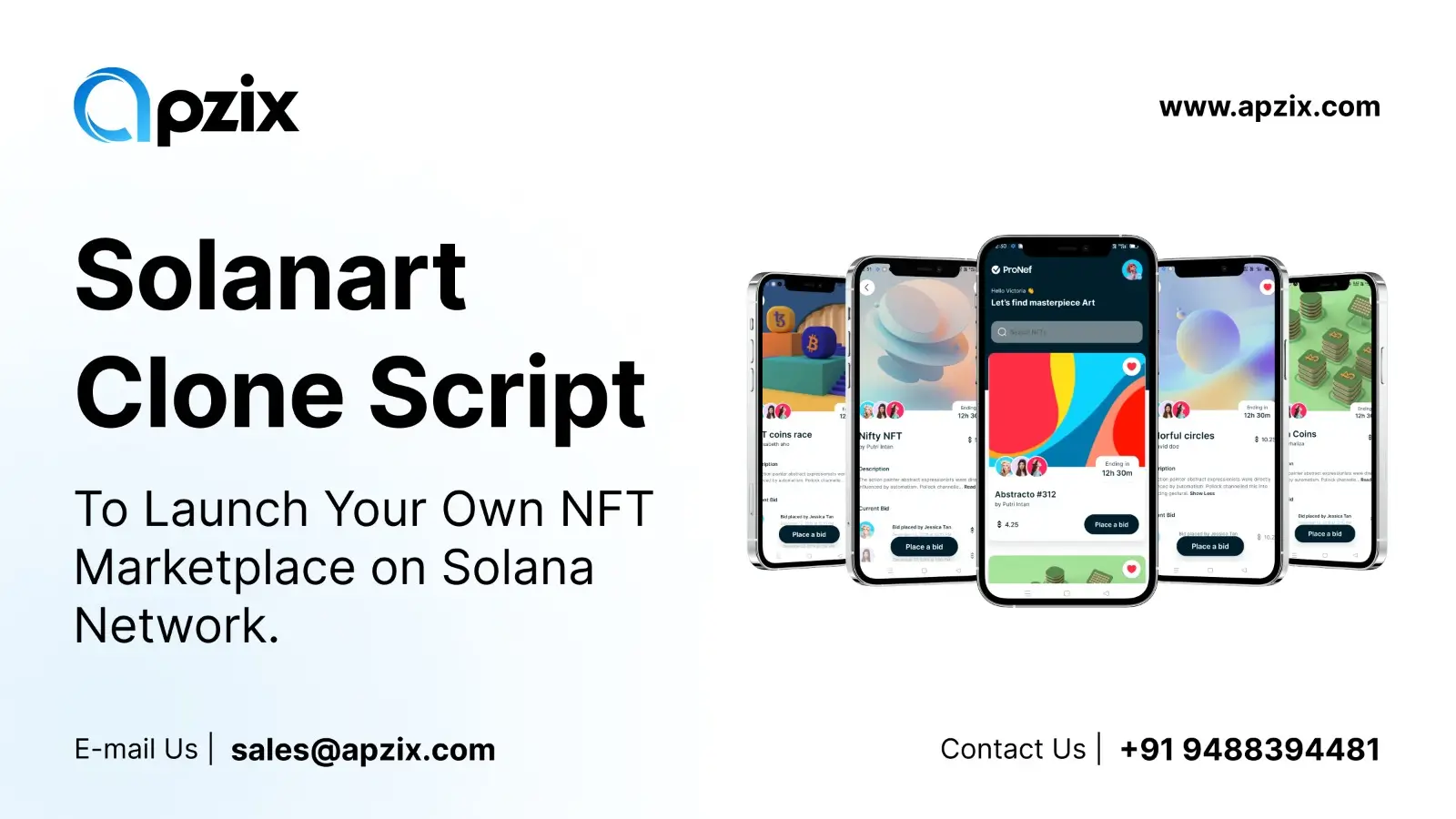
You’ve been watching the crypto space explode, and you’re thinking “What if I could build the next Trust Wallet?” You're not alone. With more people diving into Bitcoin, Ethereum, and a wave of altcoins, the demand for secure and user-friendly crypto wallets is skyrocketing. And apps like Trust Wallet have set the gold standard.
But here’s the thing you don’t have to reinvent the wheel to create your own cryptocurrency wallet app. Whether you're a startup founder, a fintech enthusiast, or a blockchain developer, building a crypto wallet app like Trust Wallet is 100% achievable with the right guidance, tools, and development team.
In this blog, we’ll walk you through everything you need to know: from must-have features and tech stacks to security essentials and how to actually get your wallet app off the ground. If you’ve ever wondered what it takes to launch a Trust Wallet-style app and carve out your space in the booming crypto industry, you’re in the right place.
What is a Cryptocurrency Wallet?
A cryptocurrency wallet is a digital tool that lets you store, send, and receive cryptocurrencies like Bitcoin, Ethereum, or any other token. It’s like your regular wallet, but instead of holding cash and credit cards, it holds your digital money securely.
But here’s the kicker crypto wallets don’t actually store your coins. Instead, they store something even more important: your private keys. These keys are like digital passwords that give you access to your crypto. Lose them, and it’s like losing the keys to a safe full of money.
Example: Think of It Like a Banking App
Imagine you use an app like Google Pay, Venmo, or PayPal. You open the app, check your balance, send money to friends, or pay for stuff online. You’re not physically carrying cash, but everything happens instantly through your phone.
That’s exactly how a crypto wallet works. Let’s say you have Bitcoin. You open your wallet app, scan a QR code, and boom—you’ve just sent crypto to a friend across the world in seconds.
But instead of being backed by banks or card networks, it’s powered by blockchain technology, which is decentralized and doesn’t rely on traditional banking systems.
Trust Wallet Clone Script
A Trust Wallet clone script is a ready-made software package designed to create a cryptocurrency wallet with similar capabilities to the well-known Trust Wallet app. It serves as a base for quickly developing a multi-currency wallet that offers secure storage, compatibility with multiple cryptocurrencies, and an intuitive interface for easy navigation. By using this script, businesses and developers can save significant time and effort in launching a feature-rich digital wallet.
Steps to Create a Cryptocurrency Wallet App Like Trust Wallet
Creating a crypto wallet app like Trust Wallet might sound like a complex mission, but when you break it down into clear, structured steps, it becomes much more doable. Whether you’re an entrepreneur, a startup founder, or a tech enthusiast ready to dive into the Web3 world, here’s a step-by-step guide to bring your idea to life.
Step 1: Define Your Wallet Type & Features
First things first decide what kind of wallet app you want to build. Will it support only one cryptocurrency or be multi-currency like Trust Wallet? Do you want it to be a hot wallet (online) or a cold wallet (offline with extra security)?
Essential features to include:
User registration & authentication
Multi-currency support (BTC, ETH, ERC-20, etc.)
QR code scanning
Real-time balance tracking
Send/receive crypto
Private key & seed phrase management
Transaction history
Biometric login (Face ID, fingerprint)
Push notifications for transactions
In-app browser for DApps (just like Trust Wallet)
Token swap or exchange integration (optional)
Pro Tip: Think about your audience. Are they crypto-savvy or total beginners? Your feature set should match their level of experience.
Step 2: Choose the Right Technology Stack
Next, you’ll need to pick the tools and platforms that will power your app. Here’s a quick breakdown:
Frontend (User Interface)
Backend (Server Side)
Blockchain Integration
Wallet Integration & SDKs
Security
Important: Never store private keys on your servers. Always store them securely on the user’s device.
Step 3: Design a User-Friendly Interface
Crypto can be intimidating, especially for beginners. That’s why design is crucial. You want to keep it simple, intuitive, and mobile-friendly.
Key UI/UX components:
Clean dashboard with balanced overview
One-tap send/receive functions
Clear transaction details
Easy backup of the seed phrase during setup
Friendly error messages and confirmations
Dark/light mode (yes, people like it)
Step 4: Develop and Integrate Core Features
This is where the coding magic begins. Your dev team will now:
Build the backend services for transaction handling, wallet generation, etc.
Set up blockchain node connections (Ethereum, Binance Smart Chain, etc.)
Integrate wallet functionality using SDKs and libraries
Enable features like push notifications, QR scanning, and DApp browser
Implement wallet backup and seed phrase encryption
It’s a detailed, iterative process but with the right architecture and modular approach, your app becomes scalable and secure from the get-go.
Step 5: Implement Rock-Solid Security
Security isn’t optional it’s everything. A breach in a crypto wallet can cost users thousands, even millions. You need to build security into every layer of your app.
Security must-haves:
End-to-end encryption for transactions
Biometric lock (Touch ID/Face ID)
2FA (Two-Factor Authentication)
Secure local key storage (device keychain or Secure Enclave)
Secure onboarding and seed phrase recovery
Real-time fraud monitoring & alerts
Don’t forget: Conduct regular penetration testing and security audits—especially before launch.
Step 6: Test and Test Again
Before going live, you need to test your app like crazy. Functional testing, usability testing, security testing—you name it.
Types of testing to perform:
Unit testing (individual components)
Integration testing (how components work together)
UI/UX testing (user behavior and experience)
Load testing (can the system handle high usage?)
Bug bounty programs (optional but powerful)
Tip: Test across multiple devices and operating systems to ensure full compatibility.
Step 7: Launch and Monitor
Once your app is tested and ready, it’s time to go live on the App Store and Google Play. Make sure your app follows both platforms' crypto policies, which can vary and may require extra permissions or legal approval.
After launch:
Monitor server health
Track user feedback and crash reports
Push regular updates and new features
Scale the backend as your user base grows
And don’t forget to market it—crypto communities, Reddit, Twitter, Discord, Telegram—they’re all great platforms to spread the word.
Key Features of a Cryptocurrency Wallet App Like Trust Wallet
If you're building a cryptocurrency wallet app and aiming for the gold standard, Trust Wallet is the benchmark. But what exactly makes it so successful? It's not just the ability to store crypto it's the thoughtful, secure, and seamless features that turn it into a go-to crypto companion for millions of users worldwide.
Let’s break down the must-have features that make a wallet app like Trust Wallet stand out:
1. Multi-Currency Support
Your wallet needs to do more than just hold Bitcoin. Today’s crypto users want to manage everything from Ethereum to Dogecoin—and even obscure altcoins—all in one place.
Support for BTC, ETH, BNB, ERC-20, BEP-20 tokens, and more
Easy token import via contract address
Real-time coin prices and market tracking
The more currencies you support, the wider your audience becomes.
2. Secure Private Key & Seed Phrase Management
One of the biggest trust builders is how securely your wallet handles private keys.
Private keys are stored locally on the user’s device
Encrypted backup of 12/24-word seed phrase
No central server access—100% user-controlled
In the world of crypto, ownership = control. And your app must empower that.
3. Send and Receive Crypto Instantly
This is the bread and butter of any crypto wallet app.
Scan QR codes for quick sending/receiving
Real-time transaction confirmation
Adjustable gas/transaction fees
Smart UI that tracks pending transactions
A clean, intuitive send/receive flow is critical for first-time users.
4. Biometric Authentication & PIN Security
Protecting user data and assets is non-negotiable.
Face ID / Touch ID login
4 or 6-digit PIN lock
Auto-lock after inactivity
Optional 2FA (Two-Factor Authentication)
A good wallet is secure by default, but also gives users peace of mind.
5. Integrated DApp Browser
This is where Trust Wallet truly shines—it includes a full Web3 DApp browser, allowing users to:
Interact with DeFi platforms (like Uniswap, PancakeSwap)
Play blockchain games
Access NFT marketplaces
Use staking platforms
Your app becomes a full gateway to the decentralized world.
6. In-App Token Swapping
Trust Wallet users can exchange tokens without leaving the app—a massive time-saver.
Decentralized swap via DEX integration
Automatic rate comparison
Low slippage settings
No third-party login required
This feature adds convenience and boosts engagement big time.
7. Real-Time Portfolio Tracking
Crypto users love watching their portfolio grow (and unfortunately, sometimes shrink). Your app should offer:
Real-time price charts
Portfolio value in multiple fiat currencies (USD, EUR, INR, etc.)
Token-specific history and trends
Give users insights, not just numbers.
8. Push Notifications & Alerts
Keep users informed in real time:
Transaction confirmations
Market price alerts
Security warnings or login attempts
DApp updates or network news
Notifications increase engagement while building trust.
9. Token Management & Customization
Allow users to customize their experience:
Add/remove tokens manually
Favorite or pin tokens
Reorder portfolio items
Set custom gas fees or slippage tolerance
The more control users have, the more they'll love your app.
10. Offline & Backup Access Options
In emergencies, users should still be able to access their wallets.
Offline QR code scanning for cold storage interactions
Cloud backup (with optional encryption)
Recovery mode using seed phrase
Always plan for worst-case scenarios—users will thank you for it.
Advantages of Building a Cryptocurrency Wallet App Like Trust Wallet
Creating or using a cryptocurrency wallet app like Trust Wallet isn’t just about following a tech trend—it’s about tapping into the future of finance. Whether you’re a developer planning to build a wallet or a user exploring better ways to manage crypto, understanding the key advantages of such an app can help you appreciate why it’s become a go-to solution for millions of people globally.
Let’s explore the real benefits of a Trust Wallet–style cryptocurrency wallet app:
Total Control Over Your Assets
One of the biggest perks of using a decentralized wallet like Trust Wallet? You own your keys. You own your crypto. That’s the golden rule of blockchain.
No banks involved
No third-party permissions
You’re in charge of sending, receiving, and holding your funds
It's like having your own digital vault—without the need for a middleman.
Multi-Currency Management in One App
Gone are the days of needing separate wallets for Bitcoin, Ethereum, and Dogecoin. A wallet like Trust Wallet supports hundreds of coins and tokens, all under one roof.
BTC, ETH, BNB, and ERC-20/BEP-20 tokens
NFT support (ERC-721, ERC-1155)
Easy token import with contract addresses
Think of it like a universal bank account for your crypto life.
Secure and Private Transactions
Trust Wallet and similar apps are designed with top-tier security in mind.
Private keys are stored locally, not on central servers
Biometric and PIN protection
Encrypted backup and seed phrase access
No mandatory KYC for core wallet features
Privacy-first and hacker-resistant, just how crypto was meant to be.
Full Access to DeFi and DApps
This is where wallet apps take things to the next level. Built-in Web3 browsers allow users to interact directly with:
DeFi platforms like Uniswap, PancakeSwap, or Aave
NFT marketplaces like OpenSea
Blockchain games and staking pools
Your wallet becomes your portal to the decentralized universe.
Easy Token Swaps Without Leaving the App
Most crypto wallets require users to move coins to an exchange to trade. Not Trust Wallet—it offers built-in decentralized swapping.
Lower fees compared to centralized exchanges
No withdrawal limits or long wait times
Users retain full custody during the transaction
Swap tokens instantly and securely—no exchanges or extra steps.
Offline Access & Portability
Trust Wallet doesn’t rely on constant internet access. Users can view balances and manage assets even offline, with transactions pending until back online.
No SIM? No problem.
Traveling? Your wallet comes with you.
It’s your global wallet, always in your pocket.
Regular Updates and Community Support
Apps like Trust Wallet are backed by active development teams and large crypto communities. This means:
Regular updates for security and new features
Bug fixes and improvements
Crowdsourced feedback and support forums
The crypto wallet is always evolving with user needs in mind.
Open-Source & Transparent
Trust Wallet is open-source, meaning anyone can review the code, suggest improvements, or even fork the project.
Greater trust through transparency
Contributions from global developers
More secure thanks to public audits
Transparency = trust. And trust is everything in crypto.
No Hidden Fees or Middlemen
Unlike centralized wallets or exchanges, apps like Trust Wallet don’t charge you random withdrawal fees or commission cuts.
You only pay network (gas) fees
No commissions, no surprise charges
100% decentralized control
What you see is what you get—your funds, your rules.
Perfect for Beginners and Experts Alike
Despite all its advanced features, Trust Wallet is super beginner-friendly. It walks you through:
Backing up your wallet
Receiving your first token
Using DApps without confusion
Clean interface + advanced power = wallet for all experience levels.
Final Thoughts
So, there you have it a complete roadmap to creating a cryptocurrency wallet app like Trust Wallet. From selecting the right tech stack to crafting a user-friendly interface, integrating essential features, and fortifying it with strong security measures, building your own crypto wallet is not only possible it’s one of the smartest moves in today’s Web3 landscape.
With crypto adoption accelerating, users are actively seeking secure, intuitive, and feature-rich wallet apps that give them complete control over their digital assets. Whether your audience is DeFi enthusiasts, NFT collectors, active traders, or complete beginners, getting the user experience right could make your wallet the next big success story.
At ApziX, a leading Cryptocurrency Wallet Development Company, we go beyond simply replicating Trust Wallet. We take what works, infuse it with tailored solutions, and deliver a unique, high-performance wallet designed to provide real value to your users.











